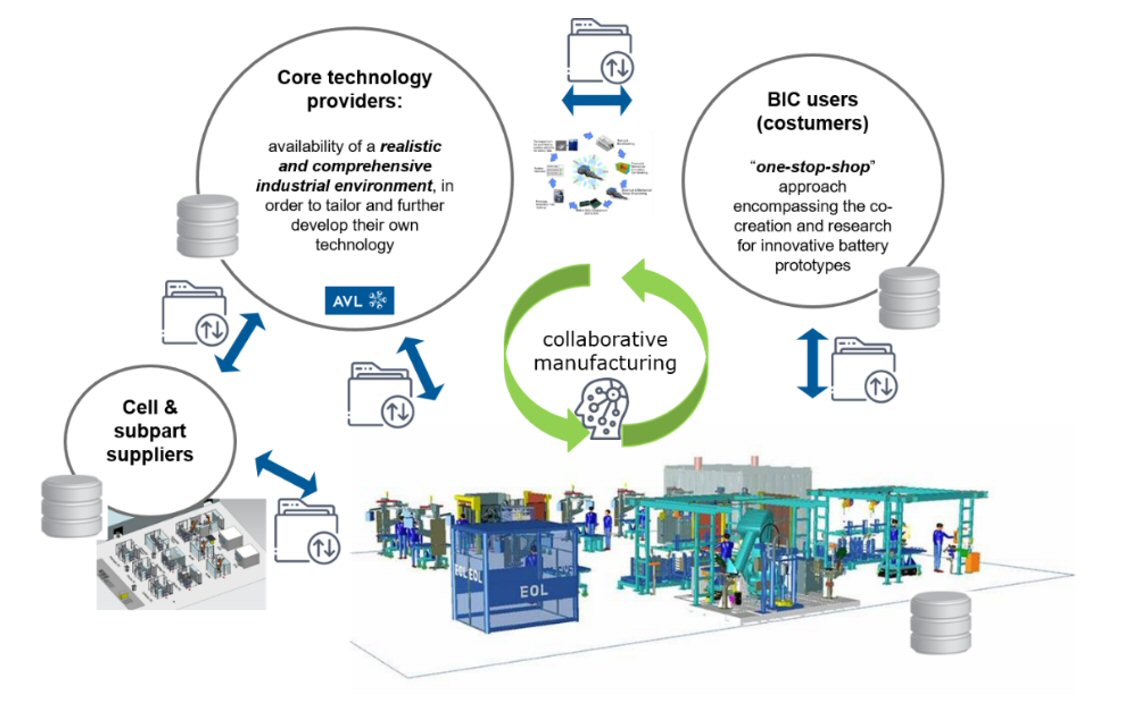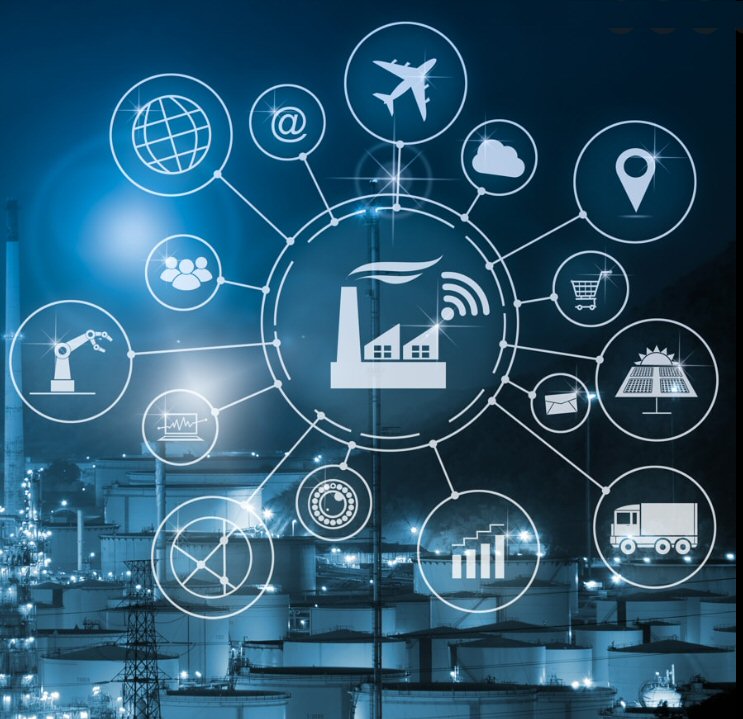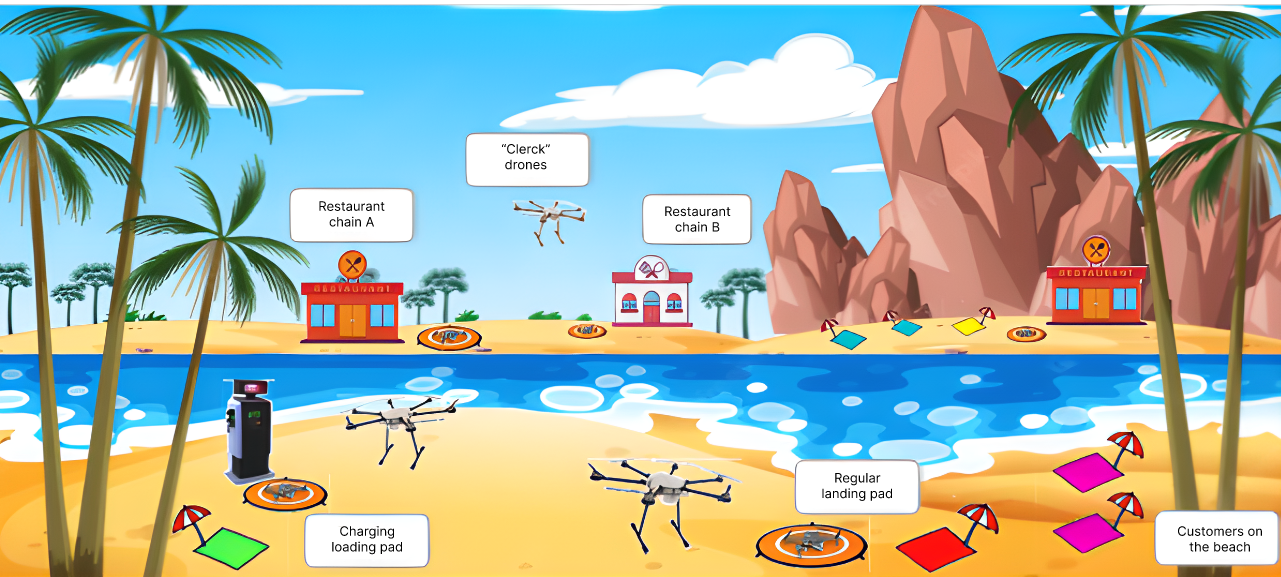
Use Cases
The project will develop novel technologies and advancements in the context of the following initial, Edge, AI and IoT – related use cases, selected by the consortium.
Figure presents the IEoT use cases and visualises the mapping of the use cases with different application areas and each other.

USE CASE 1 - Intelligent industry
This use case will focus on developing intelligent IoT edge computing and communication infrastructures for industry applications. The particular focus is on enabling autonomous collaborative manufacturing processes, intelligent maintenance of industry processes and ensuring worker safety. The three sub-use cases include Collaborative battery manufacturing, Predictive maintenance for stationary crushing and screening plants, and Worker monitoring in hazardous environments.
These sub-use cases will be based on collaborative efforts of partners from two countries: Austria, Portugal.
Partners: AVL, PDMFC, TU Wien, IT and BV.
Business area: New ways for Consumption and Production (Industry 4.0 and Metrology technologies)
USE CASE 1.1 – Collaborative battery manufacturing
Leading partner: AVL
Description: AVL is the world’s largest privately-owned company for development, simulation, and testing technology of powertrains (hybrid, combustion engines, transmission, electric drive, batteries, and software) for passenger cars, trucks, and large engines. At the moment AVL focuses on a dedicated range of services and products along a battery’s development process allowing the development of batteries from the assessment and selection of a single cell up to start of production of a fully validated battery pack. Therefore, AVL built up a Battery Innovation Centre (short: BIC) for battery projects around innovation in production methods, quality assurance, and Industry 4.0 data usage.
Main objectives: In this sub-use case, the data exchanged and maintained by AVL is the main asset to be protected. Our proposed solution for data exchange, which is based on blockchain, will fulfil a high security standard and contain an access right control to satisfy the requirements of the automotive industry. This access right control will make it possible to define which product data are passed on to the customer within the collaborative manufacturing environment. These rights to data can be easily extended or restricted for each application. The framework should be largely hardware-independent and may even be accessible via web interfaces with high security standards. Finally, as the platform to be developed is based on microservices, it will offer the possibility to define interfaces and to develop these interfaces with only a small effort for different systems in order to be compatible for external software solutions and fast enough to be competitive.

USE CASE 1.2 – Worker monitoring in hazardous environments
Leading partner: PDMFC
Description: There are several industries where workers operate in potentially hazardous environments (petrochemical, mining, waste management, etc.). A system to monitor the environmental conditions and the workers is of extreme importance in these industries. This system will minimise the probability of accidents and injuries by warning workers if the conditions are deteriorating and warning a health and safety (H&S) technician (or anyone supervising the system) of the potential danger.
This communication and sensing system is composed by:
- a wearable device, used by the workers, that will sense the parameters that can cause danger for the workers (O2, CH4, temperature, Relative humidity, etc.), allow for the monitoring of the workers’ location in near-real-time and monitor worker falls. All devices are part of a mesh network – the Wireless Sensors Network (WSN);
- a gateway that will gather the data collected by the wearable devices, process and analyse it, and forward it to a cloud platform. The gateway is part of the mesh network; it has a RF transceiver like the ones in the wearables. It will then process the received data and forward them using a different communication technology such as a LAN (WiFi, Ethernet) with an internet connection or a mobile cellular service; and
- a central platform (cloud), where the data will be stored and further processed and analysed. A GUI (web based) is also available, allowing the monitoring of the system and the work conditions. In addition, the platform communicates directly (text messages) with one or several workers.
Main objectives: The main objectives are the following:
- To design, develop and deploy a new fog and cloud architecture, keeping in mind the resources constraints, that will improve the data analysis results.
- To design and implement an authentication and authorisation mechanism for the central cloud-based platform that will assure that the platform data are only available to certain individuals or group of people with specific access rights.
- To design and implement lightweight authentication mechanisms for M2M communications where the IoT Gateway, at the Edge side, authenticates the sensors effectively and efficiently.
- To design and implement a collaborative anomaly-based intrusion detection system, located at the Edge Infrastructure, to detect a wide spectrum of different types of malicious events (i.e., due to known/unknown attacks)

USE CASE 2 - Fast Food Chain
This use case focuses on optimizing the processes in fast-food production and cold-chain logistics to achieve lower amounts of waste, improved cost-efficiency and better customer satisfaction.
Partners: Vestel, GOHM (leading partner), BV, PDMFC.
Business area: New ways for Consumption and Production (New consumption ways)
USE CASE 2.1 – Optimizing the processes in fast-food production
Leading partner: GOHM
Description: Eating in a Fast-Food restaurant became an irresistible consumption habit in the world due to their service quality, flavour and price advantage. For this reason, fast-food restaurants have the greatest market percentage, which is 50%, over all restaurants. Today, there are many big players in the Fast-Food sector with a common goal that is to satisfy the demand of the customers. Fast-food companies aspire to improve service quality and consumer satisfaction while keeping their prices as low as possible in order to maximise their market share. Although millions of people contribute to the service quality of this gigantic industry, traditional methods fail to improve operational efficiency further. Therefore, it is important to increase service quality with the adoption of emerging technologies into restaurants., over all restaurants. Today, there are many big players in the Fast-Food sector with a common goal that is to satisfy the demand of the customers. Fast-food companies aspire to improve service quality and consumer satisfaction while keeping their prices as low as possible in order to maximise their market share. Although millions of people contribute to the service quality of this gigantic industry, traditional methods fail to improve operational efficiency further. Therefore, it is important to increase service quality with the adoption of emerging technologies into restaurants., over all restaurants.
Main objectives: We can find a solution to predict the number of consumers in the restaurants according to past sales and external variables data, but these are not enough to predict the number of meat consumption precisely. The system needs to calculate the average waiting time of the consumers for tuning the results of prediction accurately, based on computer vision techniques that are applied to the cameras in fast-food restaurants. This 3-tier Intelligent IoT Edge Platform will establish an optimum connection strategy between edge and cloud. Eventually the main optimum strategy will be determined for low-latency on calculating the production level in the kitchen.
We will develop an optimum AI decision-making system between edge and cloud, then predict the meat consumption precisely for coupled restaurants in the same neighbourhood. We also develop a system to monitor customer satisfaction based on AI-based live video analysis. This work is planned to improve restaurant service quality and operation efficiency on the purpose of increasing consumer satisfaction. Moreover, the output of this project will help reduce the carbon footprint by reducing waste tremendously.
GRAND DEMO - Food distribution at the beach
Leading partner: Beyond Vision
Description: At the beach, there are several nearby restaurants that enable the possibility that the beach users order a full meal, a snack or just a drink and having these be delivered to where they are standing on the beach by means of a drone that carries a box with the food contents and a means of identification to guarantee that the food is delivered to the customer that has ordered it. To be able to carry out this operation, the restaurants have come together and subscribed a platform that manages the fleet of drones needed to optimally maintain the operation up and running.
Problems and challenges: One of the main challenges this scenario poses to the consortium is the optimization of the fleet of drones and the resources they need to correctly operate (charging stations,
landing pads, predictive maintenance, etc.). The consortium will develop algorithms that are capable of predicting the number of drones and added resources to carry out this operation without waste of precious equipment. The consortium will use a 3-tier approach to distribute the available resources optimally. Other challenges are security (food delivered to the right customer) and safety (drones being properly managed and maintained to ensure safe operation). Each of the consortium members will address one or more of these challenges to end up with a fully integrated environment that fulfils the main use-case objectives.
Main objectives: The main objectives for this scenario the following:
- To design a cloud based platform that will manage the resources, based on prediction algorithms to optimize the assets needed to run the operation.
- To design and implement an authentication and authorisation mechanism that will ensure that the right customer gets his food.
- To implement an intrusion detection system to guarantee the security, integrity and privacy of the data that comes both from the customer and from the service provider.







